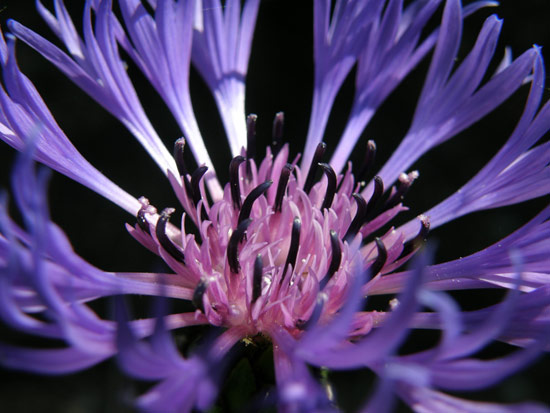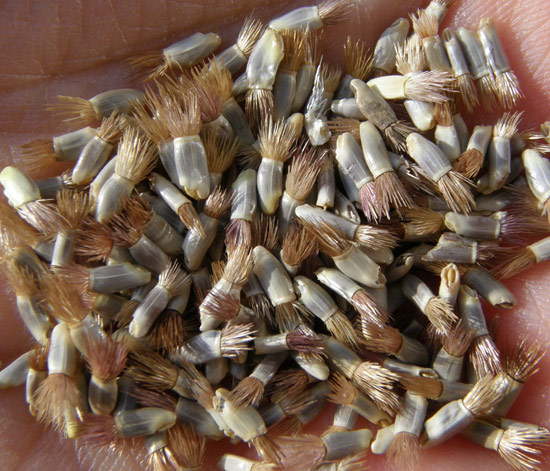National Flower
Cornflower (common name)
Centaurea cyanus (scientific name)
Designation
Official
Also Known As
Bachelor’s buttons, basket flower, blue-bottle
Classification
- Kingdom: Plantae
- Division: Magnoliophyta
- Class: Magnoliopsida
- Order: Asterales
- Family: Asteraceae
- Genus: Centaurea
- Species: C. cyanus
The Flower
Related to the daisy, the cornflower is a small, slender, annual plant with distinctive blue flowers that are highly valued both by gardeners and florists. It has an upright, often branched, stem; lower leaves are long, narrow and split into irregular lobes, while upper leaves are smaller and more symmetrical. The leaves and stem are grayish-green, with fine gray hairs. The flowers grow at the ends of the stems, and are composed of rings of large "ray" florets surrounding a centralized cluster of "disk" florets. The ray florets are bright blue and the disk florets are a deep purplish color. The emblematic blue color of the cornflower is due to the pigment protocyanin. The flowers have both a stigma and anther, and are pollinated by insects, usually butterflies, bees and flies. The seeds are up to 3 mm (0.11 in) long and similar in size and shape to small cereal grain; each has a short tuft of bristly hairs. In the wild, cornflowers grow on the edges of cornfields, often interspersed with other flowers, including poppies and chamomile.
Physical Details
Duration: Annual
Plant: Hardy, herbaceous
Mature Height: 60-90 cm (24-36 in)
Flowering: May-September.
Flowers: 1.5-3 cm (0.59-1.1 in) diameter bowl-shaped, solitary, flower heads.
Flower Color: Deep azure blue
Leaves: 10 cm (4 in) long, 5 mm (0.19 in) wide narrow, gray-green, alternate leaves
Fruit / Seed Color: yellowish brown to nearly black
Habitat
Location: Prefers sandy loam and grows in fields, meadows, roadsides and along railroad tracks; it is also cultivated
Range: Native to Europe and widely cultivated in North America. A common garden plant, it also grows as a weed. It is classified as endangered in the UK, and protected under the Wildlife and Countryside Act in England and Wales.
Trivia
- The word centaurea comes from Greek mythology; one of the centaurs, Chiron, was supposed to have used cornflowers to heal wounds.
- The people of Estonia chose the cornflower as a national symbol in 1968, but the flower was a folk emblem for many years prior to that. In Estonia, cornflowers grow mostly in rye fields, so Estonians have long associated the flower with their staple grain. The upper stripe on the Estonian flag is commonly called cornflower blue. The shade on the flag dates to the late 1800s, and was strongly connected with Estonian nationalism from that period through the nation's Soviet era; it is still seen as a symbol of Estonian independence.
- The cornflower is also the symbol of an Estonian political party, the People’s Union.
- Blue cornflowers are part of the traditional garlands young Estonian girls wear for festivals, and the cornflower is regularly used as a motif in local folk art.
- Pink and purple cornflower cultivars have been developed.
- Though frequently grown in gardens, cornflowers are endangered in their native habitat due to the over-use of herbicides.
Article written for World Trade Press by WTP Staff.
Copyright © 1993—2025 World Trade Press. All rights reserved.

 Estonia
Estonia 



